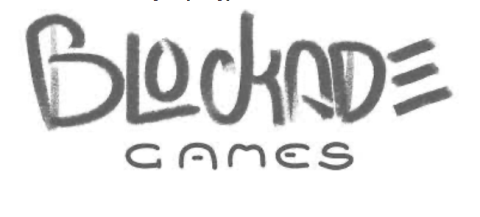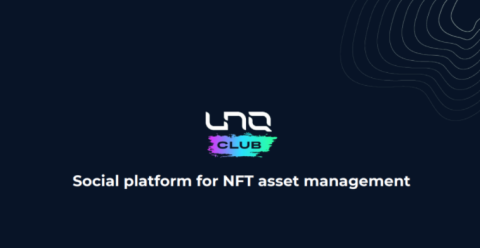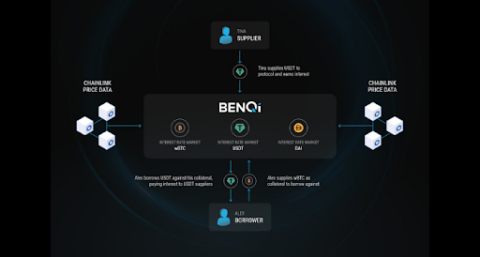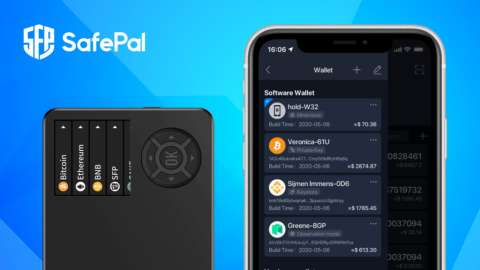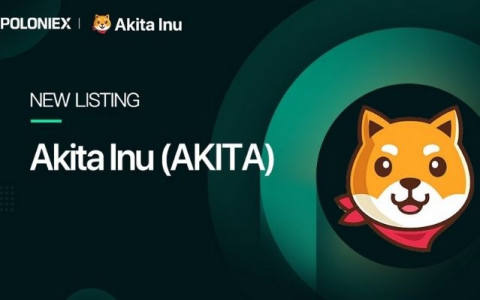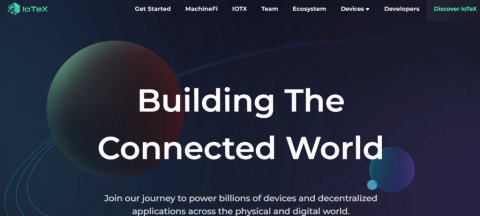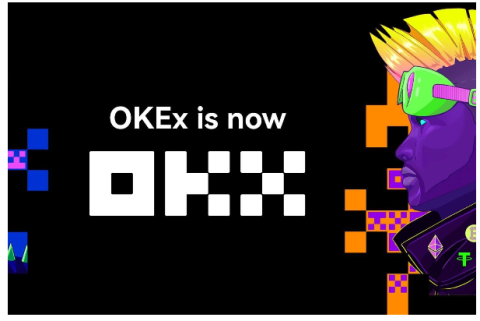What is thena? Discover the outstanding features of Thena and THE . token

Ngoài PancakeSwap, hệ sinh thái BNB Chain còn có một AMM khác có TVL đạt 150 triệu USD chỉ sau hai tháng ra mắt, dự án này được gọi là Thena.
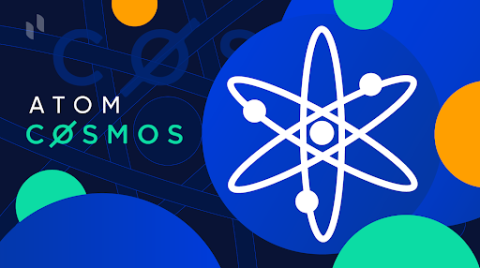
Cosmos is a project introduced as the “Internet of blockchains” or a decentralized network of blockchain networks. In it, each blockchain is powered by BFT consensus algorithms like the Tendermint consensus algorithm.
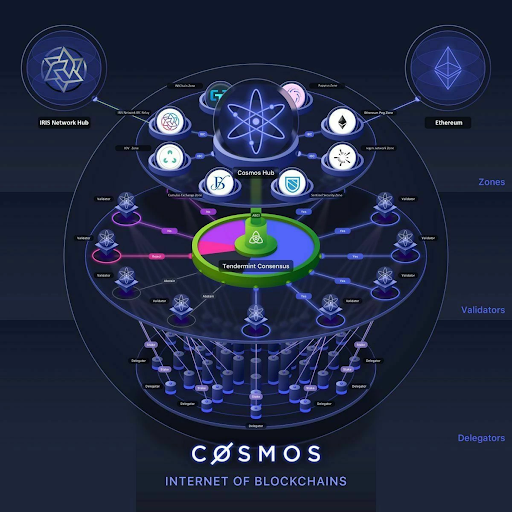
In a simpler and easier to understand direction, Cosmos can be considered as an ecosystem of blockchains, where these blockchain networks are scalable and interoperable. This is a special feature of Cosmos, making this project an important step forward in the community of blockchain enthusiasts. Previously, blockchains were isolated, unable to communicate with each other, or between each blockchain network could only handle a very small amount of transactions per second. Therefore, creating a network that helps blockchains communicate with each other is extremely necessary.
The Cosmos creative team embarked on this project with the desire to be able to solve three core problems: Operability, scalability, and sustainability. This project becomes different when not only focusing on its own network but building an ecosystem of blockchain networks. There, all information and tokens can be exchanged systematically, without the need for a central unit to coordinate activities, while ensuring the security of each party. Besides, the project also helps application developers simplify programming on compatible strings.

In Cosmos, each independent blockchain network is called a “zone”. These zones are operated through the BFT Tendermint consensus algorithm. Each zone will be directly connected to the Cosmos Hub - Where the zone's data is stored. This is also the first blockchain built on Cosmos and it uses a POS (Proof-of-stake) consensus algorithm with a very simple governance mechanism, allowing each network to adapt and upgrade. In addition, the Cosmos Hub can be extended by linking to other zones.
All token transactions between zones are done through Cosmos Hub, so it is possible to track the total number of tokens each zone owns. On the other hand, Cosmos Hub will also separate problem zones from other zones, and allow zones to be improved and compatible with new blockchains in the future.
Through Cosmos, the founding team wanted to simplify the development of applications for developers onto compatible chains. This also helps break down the barriers between chains, thereby allowing them to communicate and exchange transactions back and forth.
Cosmos is linked by layers of algorithms through an open source toolkit, which includes:
Tendermint
Tendermint BFT is the main engine in the layer fabric that powers Cosmos, allowing developers to build blockchains without programming from scratch. At the same time, it also helps software to connect with each other through ABI (Blockchain Software Interface).
In theory, blockchains running Tendermint can handle 10,000 transactions per second and continue to operate even when only a third of validators are offline or trying to break. network destruction.
Tendermint BFT
Tendermint BFT is understood as an algorithm operated through a network of computers running Cosmos software. This network is built to ensure the security of the system, authenticate transactions and connect blocks on the blockchain network.
Participants who can launch the blockchain or vote on system changes will need to stake ATOM tokens first. In case a user wants to become a validator, it is necessary to have at least 1 validator node in the top 100 nodes that stake the most ATOM. At that time, the voting result will be decided based on the amount of staked ATOM tokens.
Cosmos Hub and Zone
Cosmos Hub is a multi-asset management blockchain network where tokens can be held by other users or zones. These tokens can be transferred from one zone to another by an on-chain communication protocol (IBC) wallet. Cosmos Hub will be responsible for maintaining the immutability of all tokens in each zone. E-wallets for token trading must be committed by the sender, the holding center and also the receiver.
In the Cosmos system, each zone will store information about account verification, transactions, creation and distribution of tokens. Cosmos Hub is also responsible for maintaining interoperability between zones.
Inter-Blockchain Communication Protocol
Chain Communication Protocol (IBC) is an intermediary that connects zones to the Cosmos Hub. Through IBC, information between chains can be exchanged freely and quickly, while ensuring confidentiality.
Cosmos SDK
The Cosmos SDK is a tool that allows users to build Proof-of-Stake blockchain assets that, similar to Cosmos Hub, will also be licensed with the Proof-Of-Authority blockchain. The blockchains initialized by the Cosmos SDK are often referred to as application-specific blockchains.
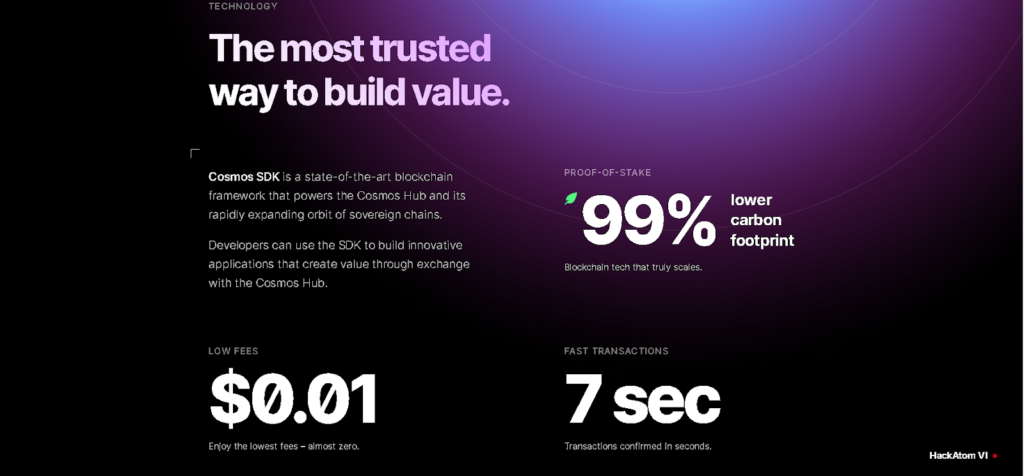
Regarding the development team, the Cosmos project is currently backed by the ICF (Interchain Foundation) organization along with the Tendermint development team. Therefore, behind the project is an excellent team with members:
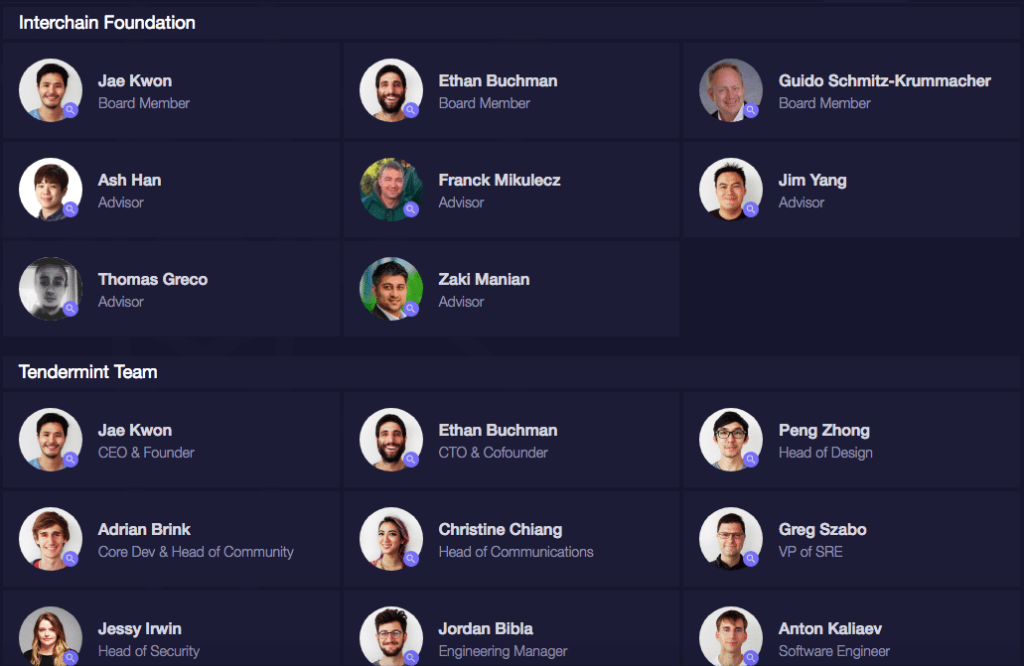
After 07 rounds of funding, the Cosmos project has received USD 17,000,000, the most recent round taking place on May 27, 2021 for investors. Currently, some of the major investors of this project include 1confirmation, Cardinal Capital, Paradigm, IOSG Ventures, Yield Ventures and a number of other organizations and individuals.
The current development plan of the Cosmos project is divided into 4 phases:
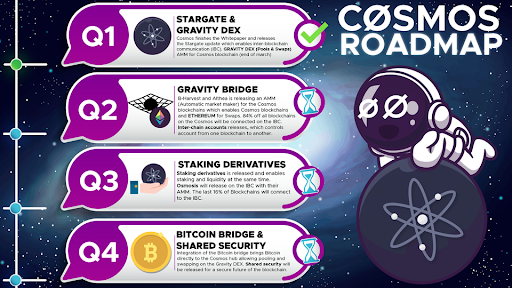

As an ecosystem for blockchain networks, however, Cosmos still owns its own token, ATOM. Even so, every token is supported in the Cosmos ecosystem.
Regarding the ATOM token, Cosmos created this token to be staked to help secure the network. At the same time, when users own ATOM tokens, users have the right to vote on governance proposals, thereby improving the quality of the Cosmos Hub system in the future.
In the Cosmos ecosystem, the ATOM token holds the following basic functions:
Unlike other projects, there is currently no limit on the number of ATOM tokens. Instead, the number of ATOM tokens will be adjusted by Cosmos based on the number of tokens staked. So in 2020, ATOM's annual inflation rate is in the 7% to 20% range.
Currently, ATOM tokens are being sold at Coinbase . For investors living outside the US, exchanges like Binance, Gate.io, Huobi are highly recommended reputable options.
Many investors are still hesitating whether to invest in the Cosmos project or not. And the fact has shown that, compared to the current Polkadot (DOT) token, the total number of ATOM tokens is about 1/4 with a lower price of about 30%. In the future, if the Cosmos ecosystem can continue to bring in more projects, its price is expected to grow well and have a lot of potential.
Investors interested in the Cosmos project can learn more at one of the following links:
Website | Project Information | Twitter | Telegram | Reddit | LinkedIn
Ngoài PancakeSwap, hệ sinh thái BNB Chain còn có một AMM khác có TVL đạt 150 triệu USD chỉ sau hai tháng ra mắt, dự án này được gọi là Thena.
Blockade Games provides a platform that allows developers to create blockchain games. In addition, Blockade Games also creates many interesting free games.
UNQ Club is a project that provides a blockchain platform that allows investors to collect and manage existing NFT assets.
BENQI is one of the important pieces of the Avalanche ecosystem. Join TraderH4 to find out what BENQI (QI) is as well as detailed information about the QI token.
In addition to a cryptocurrency storage wallet, SafePal is also known to many investors for its SFP tokens and airdrop events with attractive rewards.
The fever from Akita Inu in the Crypto market in the past time has created a great buzz along with the rapid development of the "dog house token".
What is IoTeX? This is a blockchain built and developed in conjunction with the Internet of Things (IoT). Join TraderH4 to learn this article.
What is OKB? OKB is an exchange coin of OKX and the OKX Chain blockchain. Let's learn about OKX and OKB exchanges with TraderH4 in this article.
DROPP GG brings an innovative and novel idea to provide an NFT mint platform based on geographies outside of the real world.
CronaSwap is a DEX built on Cronos Chain, which has a similar model to Uniswap.
